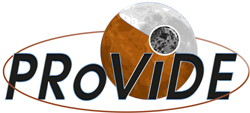Founded in 1872 as the University of Wales, Aberystwyth University (AU) was the first university institution to be established in Wales. Today, it has over 14,000 registered students across 18 academic departments. The Department of Computer Science is a leading computing department in Wales and one of the major UK departments, both for research and teaching. Research in the department is motivated by the needs of industry, business and government, and actively looks for opportunities for technology transfer. The department believes that collaboration in research is essential and collaborates with industry, with government, and with other academic institutions, on a national and international level.
 The space and planetary robotics group has a Planetary Analogue Terrain (PAT) laboratory (‘Mars Yard’), which supports advanced rover and manipulator motion tracking equipment, the latest operator/robot interaction and visualisation equipment, and a ‘Concept E’ rover chassis with a mounted manipulator, associated sensors and instruments. The PATLab hardware and software facilities will be used to support the development of the proposed PRoViDE algorithms.
The space and planetary robotics group has a Planetary Analogue Terrain (PAT) laboratory (‘Mars Yard’), which supports advanced rover and manipulator motion tracking equipment, the latest operator/robot interaction and visualisation equipment, and a ‘Concept E’ rover chassis with a mounted manipulator, associated sensors and instruments. The PATLab hardware and software facilities will be used to support the development of the proposed PRoViDE algorithms.
Key Personnel
Prof. Dave Barnes ( died on July 25th 2014)
Dave Barnes is Head of Space Robotics at AU and holds the position of Professor of Space & Planetary Robotics. Barnes has been a PI on numerous projects funded by the UK EPSRC, PPARC, Royal Society, and European funded projects including ESA. Barnes is a member of the ESA ExoMars consortium and has worked on the EADS Astrium led ESA ExoMars Phase A study, and is a Co-I on both the ESA ExoMars 2018 PanCam and CLUPI instruments. His responsibilities include PanCam and CLUPI modelling, simulation, image processing and data visualisation; cameras calibration; and radiometric and colourimetric image processing. Barnes is a member of the ESA Mars Express consortium and was responsible for the Beagle 2 Lander robot ARM calibration prior to its launch to Mars in 2003, and with the SW modelling and simulation of the Beagle 2 robot ARM for mission planning purposes. Barnes was the project manager of the AU contribution within the EU FP7 PRoVisG and PRoViScout projects.
For more information, visit Professor Barnes’ home page.
Dr. Laurence Tyler
Laurence Tyler is a Research Associate in Space and Planetary Robotics at AU. As part of the AU ExoMars team he is involved in PanCam calibration and image processing, robotic arm control and calibration, and techniques for autonomous science imaging and sample acquisition. He was a Co-Investigator on both the PRoVisG (Planetary Robotics Vision Ground Processing) and PRoViScout (Planetary Robotics Vision Scout) EC FP7 projects. He has designed and implemented a number of hardware and SW systems, including the AU PanCam emulator (AUPE), an autonomous imaging Aerobot for the PRoViScout project, and a new control and test harness for the Beagle 2 arm. Previously he has been involved in managing the UK Swift Science Data Centre, as part of the Swift autonomous gamma-ray observatory mission.
Dr. Tony Cook
Tony Cook is a Research Lecturer at the Mathematics and Physics Institute at Aberystwyth University. He has 20 years of experience in working on automated planetary mapping, primarily stereo, but also surface feature taxonomy and GIS. In the late 1990’s he was employed at DLR Berlin on cartographic software for the Mars 96 mission. He has worked at the Smithsonian’s National Air and Space Museum in the Center for Earth and Planetary Studies and produced the first automatically generated planetwide DEM of the Moon from Clementine imagery at 1 km/pixel using many hundreds of thousands of stereo pairs. Whilst at the Smithsonian he also produced a DEM of Mercury from Mariner 10 stereo imagery covering 25% of the planet’s surface. He is presently involved in using robotic telescopes to look for impact flashes from meteorites striking the moon, using the same telescopes to monitor wave conditions on the sea.


